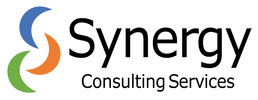|
The good news is that the economy is improving. The bad news for business leaders is that finding good talent is getting harder, particularly for positions focused on STEM (science, technology, engineering and math). The pool of active candidates is shrinking. What does this mean?
This is a critical time to shore up your talent acquisition practices, specifically your sourcing/recruiting system as well as your screening process. This article discusses how the connection with talent is once again shown to be the #1 influencer of time-to-fill. A strong process is also essential for identifying the candidate who is the best fit, and for creating a positive experience for candidates. Don’t wait until the talent competition is even more intense to improve your hiring practices. Stay ahead of your competition. Be proactive and make improvements now with these five activities.
0 Comments
 What? Fast track a new grad to the C-suite in 5 years? Are you crazy?” Promoting a new grad to the C-suite in 5 years likely is crazy. I get it. But asking a new grad to wait 5-7 years for a promotion is just as crazy. Promotions bring internal and external affirmation that we are doing good work and that the company values us. Even for the more shy and reserved employees, activities like calling our family to share the news and posting our new job title on LinkedIn are just plain FUN. When was the last time you had a promotion? What kind of boost did that give you? Did you give yourself a chance to bask in it, at least a little? (I hope so!) Our historic model of giving promotions was that they were sparse. An employee received a handful of promotions during their career and often even one-step promotions came with notable increases in responsibility and compensation. This was the model everyone has known. If you wanted to climb the career ladder, you may have to get the promotions by taking a new job with a new employer because there weren’t many opportunities for promotion in your company. So, some employees left in order to get the promotion elsewhere, but the risk of loosing seniority, retirement benefits and more were powerful to keep people where they were. That was then. Today, it’s a different game. This article Why You Hate Work by Tony Schwartz of The Energy Project came out last week and I feel compelled to write about this because it is such a powerful, yet simple, piece with insights and suggestions based on data and research.
For anyone who has responsibility for managing or leading others, this is a critical read, especially while asking, “What kind of environment do I and our company create for our employees?” Here is what I found to be one of the most striking parts of the article. From a 2013 survey done by The Energy Project and Harvard Business Review, 70% of employees cited that they do not have regular time for creative or strategic thinking. 70% makes for a lot of employees who can only operate on the tactical level, perhaps like the proverbial hamster in the wheel. On one hand, this figure did not surprise me because I have certainly experienced this myself and often seen it in others. But the impact of this intrigues me. What are we missing if so few of our employees have this time? If more employees had more creative or strategic time, what problems might they solve? What new ideas might they generate? How might we outperform our competition?  There's already enough mumbo-jumbo in the world about strategic planning, so I'll keep this short. If you're dealing with any of the following, consider your company in need. 1) Nobody says, "No." Every idea is met with, "That sounds great! Why don't you run with that?" When you have a plan and people internalize it, there is liberty with saying no (and empowerment) because the team knows what you are (and more importantly, are NOT pursuing). 2) Managers don't know how to make decisions. If they're capable of making decisions (that's a separate skill), but cannot, it's likely because they don't have clarity on vision, broad goals, and how they fit in. It's time for strategic planning (or revised communications on your existing one). 3) Everyone comes to the top person for decisions. (see #2)  There is nothing easy about screening candidates. Mishires are costly in many ways. We want to know all we can about a candidate because we think that's how we make the best decision. More is better, right? And with so much information at our fingertips thanks to the Internet, it is quite easy to learn a lot about someone. You can see photos of them on Facebook, read Facebook posts, see their Twitter feed, Google them and learn what organizations they are part of and much more. But does all of this go too far? While the interest in more and more information is understandable, it does not equate to a better hire. It equates to noise, and potentially damaging noise at that. Damaging? Yes, because through online research you are likely gathering information that is not relevant to job performance and even information that puts you at risk of being accused of discrimination. (See this January 2014 article from Scientific American about a study on this.) Often, employers are digging around for this additional information online because they lack clarity about what a person in a role needs to deliver, and they lack the structures and skills to evaluate a candidate's likelihood of success. Understandably, this leads to doubt and insecurity when evaluating candidates. And this then leads to grasping for all the information one can get (and information online is just so easy) in order to appease the feeling of doubt.  Most offices have the superhuman employee. Sometimes whole companies are made of these working-a-million-hours-always-taking-on-more-ever-so-committed people. Are you one of the superhumans? Are you requiring others to be? This topic is on my mind a lot right now for several reasons. For the past two weeks, I've been bombarded with articles, videos, and conversations on this subject. It's to the point of being eerie. Have you been reading a lot about this as well? Additionally, this topic resonates with me because I certainly wrestle with the inclination to try to be superhuman. I'm working a lot now on addressing that because I know it's not healthy for me or my family. I also do not I do my best work under these circumstances, which means it's not fair to my clients. The first nudge on this topic was this article on 60-hour work weeks that my friends at Dress for Success Indianapolis shared. It's short and I found it hard-hitting. If we are working 60-hour work weeks, SOMETHING IS WRONG. I don't know how many times I've said that phrase to myself lately. I love that the article talks about the prospect that maybe our job is ill-designed and resources are limited...it's not just pointing a finger at being a perfectionist or workaholic (although those can be issues, too).  There's a bandwagon rolling through town with "Ditch the Performance Review" painted on its side. Have you jumped on already? Are you tempted to? I understand the appeal of this bandwagon. Most people don't enjoy giving feedback and receiving feedback can be awkward. Furthermore, the review process can take up an exorbitant amount of time and pull us away from daily work. But people need feedback. We need it at home. We need it at work. We need to know how we're doing, and how what we're doing fits in with what others need and want. Generally speaking, people are conscientious and that's where the desire comes from. (If someone is adamant that they don't need feedback of any sort from anyone, I think that brings its own concerns.) Can we agree that people need feedback? And beyond just meeting needs, well-executed reviews can build trust and engagement in your company. The issues comes around how reviews are done...let's look at that.  Whether you hire 1,000 people annually, 10 or even 1, there is tremendous value in examining your hiring system, considering whether it’s as strong as it could be, and identifying opportunities for improvement. But I know you have a ton of other stuff to do. Why is this important? A weak hiring system results in wasted time by you and your employees, vacant seats for longer than necessary, and poor hiring decisions, all of which negatively impact revenue, client service, and morale. It’s possible that you may not even be aware that your hiring system has weak points: the “You don’t know what you don’t know,” phenomenon. For example, you may think that you have an efficient and streamlined process, but little do you know that there are inexpensive and easy-to-operate software options that can save tremendous time and help you make even better decisions. Whether you’re happy with your hiring system right now or it’s causing you known frustration, here are 10 key questions that can help you identify opportunities.
No matter how you do this, I hope you will take an hour or so to think through these 10 questions and determine how strong your hiring system is. After all, your talent is the foundation for your company’s success. |
Categories
All
Archives
January 2017
Want more? |
Services |
|



 RSS Feed
RSS Feed